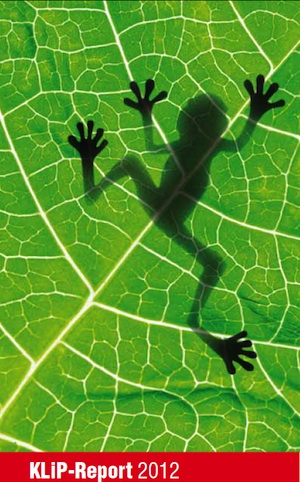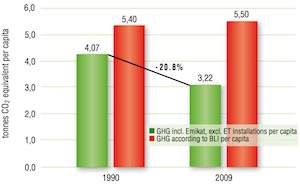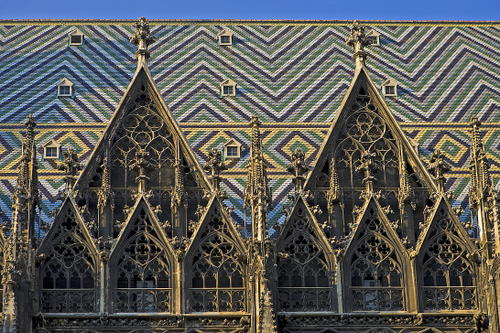Город климатической программы защиты Вены
 Photo Gallery, the capital of the Austro-Hungarian Empire. It played an essential role as a leading European music centre, from the great age of Viennese Classicism through the early part of the 20th century. The KLIP program covers the entire city of Vienna and therefore the historic centre which was inscribed on the World Heritage List in 2001.
Photo Gallery, the capital of the Austro-Hungarian Empire. It played an essential role as a leading European music centre, from the great age of Viennese Classicism through the early part of the 20th century. The KLIP program covers the entire city of Vienna and therefore the historic centre which was inscribed on the World Heritage List in 2001.
On December 18th, 2009 Городской совет Вены приняты Обновление программы защиты климата города Вены (Клип II), которая будет действовать до 2020. The objective of KliP II is to reduce greenhouse gas emissions by 1.4 million tonnes by 2020 by using a package of 385 отдельных мер. Including the 3.1 million tonnes of emissions already reduced by 2008, the total reduction will amount to 4.5 million tonnes of CO2 equivalent by 2020.
KliP II measures
Эта программа является обновлением так называемых Клип Я, который был принят в 1999 and consists in a set of measures in the following large fields of action: energy supply, use of energy, Photo Gallery, and procurement, обращение с отходами, сельское и лесное хозяйство, природоохранные.
The KliP II measures aim to reduce per capita emissions by 21% of the 1990 level by 2020. An analysis of the development of greenhouse gas emissions per capita shows that the emissions in 2009 were already 21% below the 1990 level (KLiP I). The ambitious implementation of the planned measures of KliP II includes the following:
- increase the share of district heating to 50%
- continue the thermal renovation of buildings
- increase the share of public transport, reduce car
- traffic, and promote ecomobility by focusing on public
- транспортировки, cycling, and pedestrian traffic
- more than double the amount of end-use energy produced from renewable energy sources from 1990
- develop an energy supply security plan.
Climate protection, renewable energies and energy saving measures
 Photo Gallery. Реализованные проекты на сегодняшний день включают гидроэлектростанции, ветровые электростанции, солнечных тепловых, фотоэлектрических установок и мощностью древесной биомассы растений. As there are constraints on the installation of renewable energy plants within the city limits, Город Вена все больше превращается в новые проекты в регионе, как внутри, так и за пределами Австрии.
Photo Gallery. Реализованные проекты на сегодняшний день включают гидроэлектростанции, ветровые электростанции, солнечных тепловых, фотоэлектрических установок и мощностью древесной биомассы растений. As there are constraints on the installation of renewable energy plants within the city limits, Город Вена все больше превращается в новые проекты в регионе, как внутри, так и за пределами Австрии.
A significant number of solar-thermal power installations are used in the city to supply hot water and heating, and photovoltaic plants convert sunlight into electricity. Wind and water are used as energy sources in wind power plants and a mini-hydropower station, and buildings are heated by means of geothermal energy. The final result will more than double the amount of final energy produced by renewables compared to 1990.
One of the basic problems of climate protection lies in the fact that mankind consumes more and more energy despite various positive measures (Photo Gallery). Countering this development is one of the greatest challenges of the future. Therefore the City of Vienna has given special importance to energy saving measures. This is why a “Municipal Energy Efficiency Programme (SEP)” has been worked out after 2009. Домохозяйства, trade, the services sector, промышленность, public institutions, сельское хозяйство, and transport were investigated with a view to the opportunities and potential for energy savings and the framework conditions and measures required for this purpose were defined.
Lessons learned and potential replicability
The climate protection programme of the City of Vienna has not only succeeded in reducing greenhouse gas emissions and improve the quality of life, but has also stimulated the economy considerably. Between 1999 и 2010, Photo Gallery 20 миллиард, creating an added value of approximately 18.7 миллиард. This secured over 58,600 jobs in 2011.
This vision is a driving force for replication of the experience from Vienna to many cities and villages included in the UNESCO sites.
















